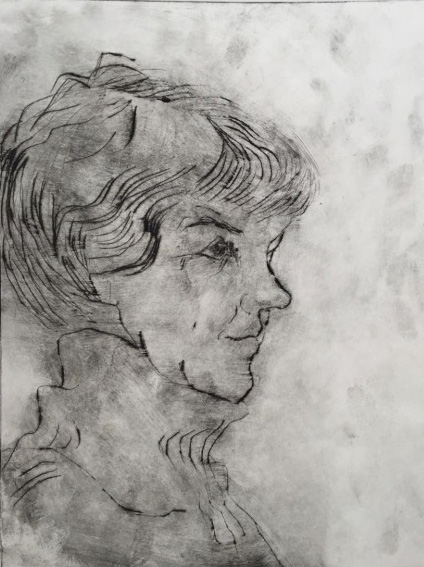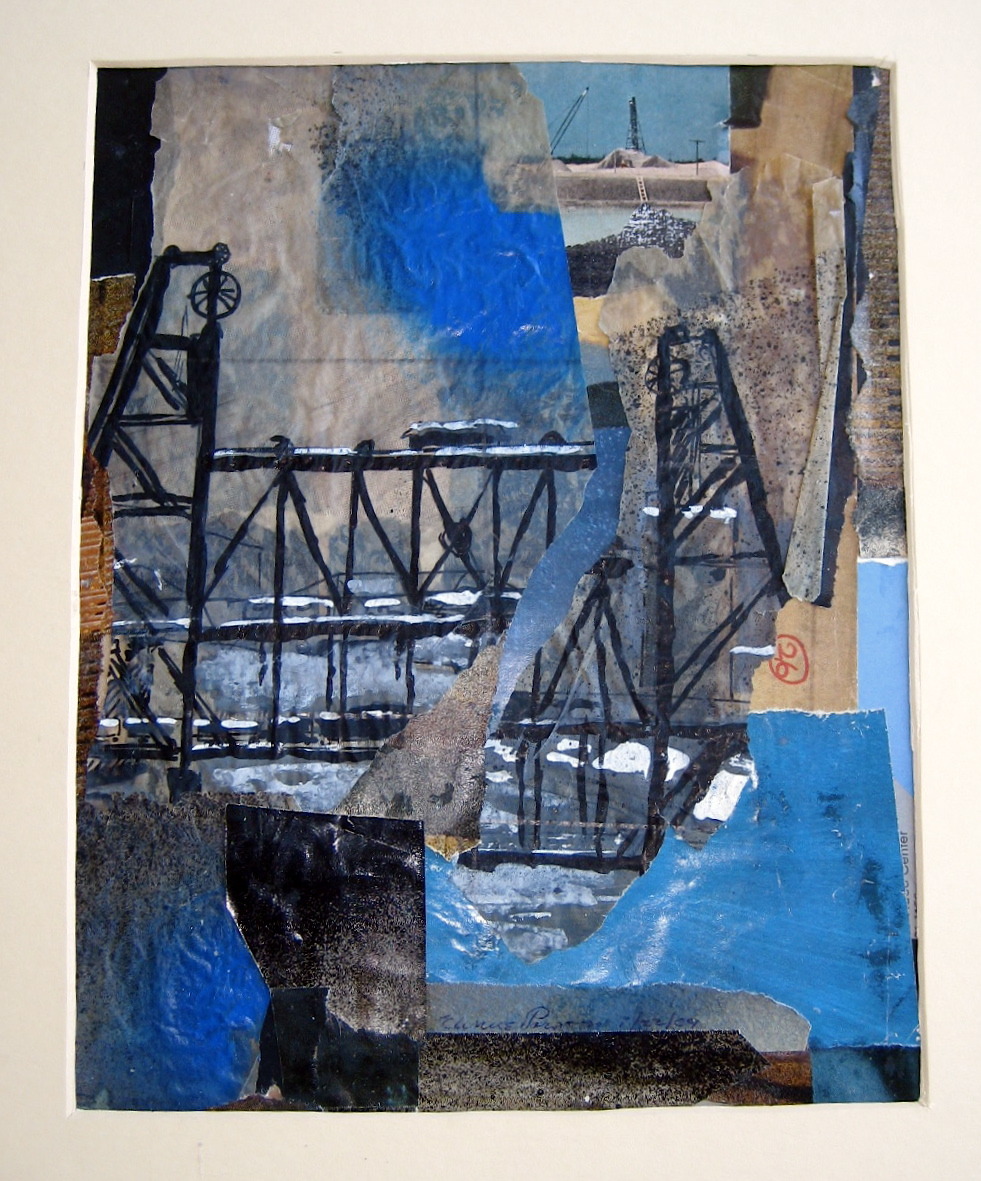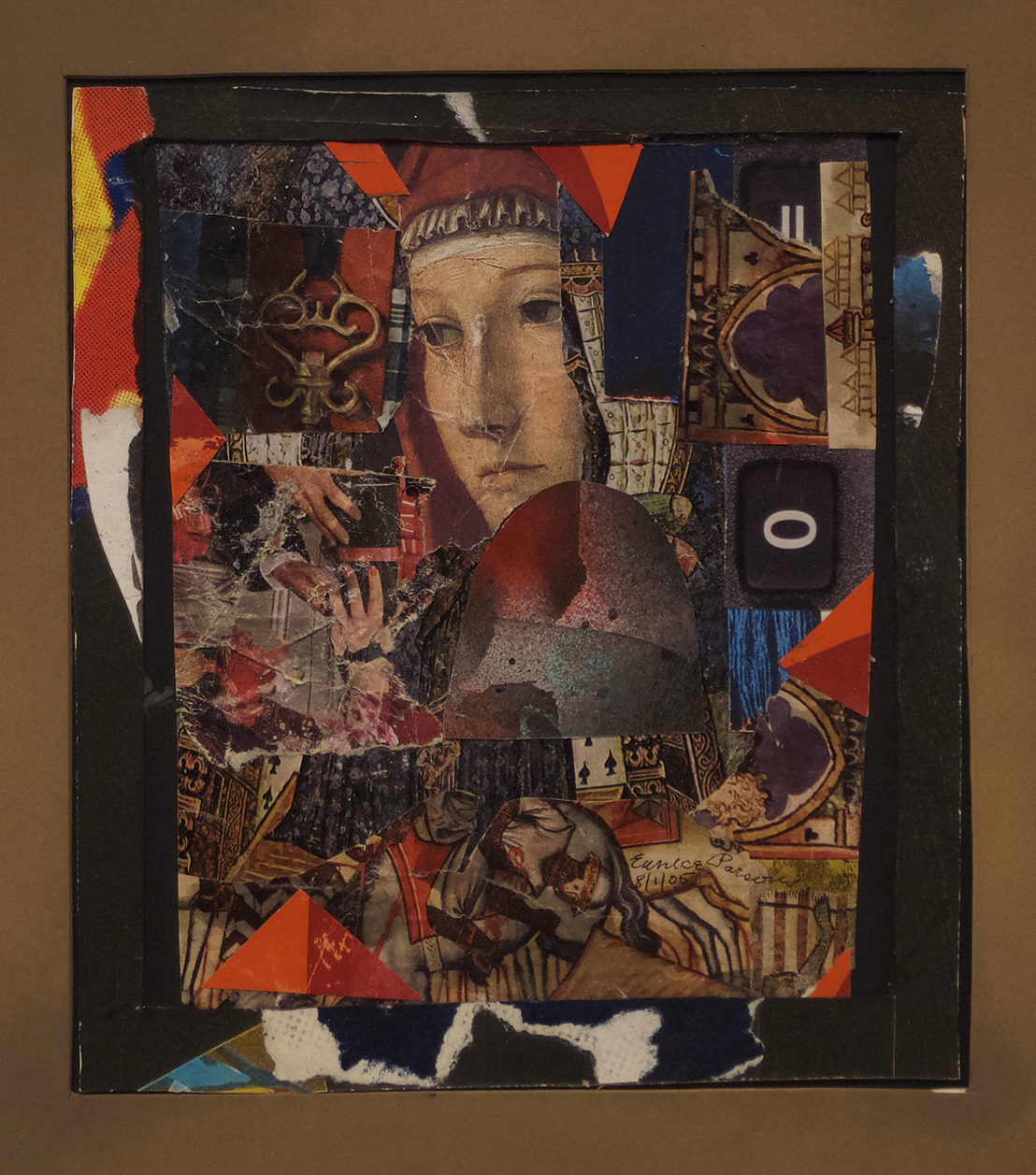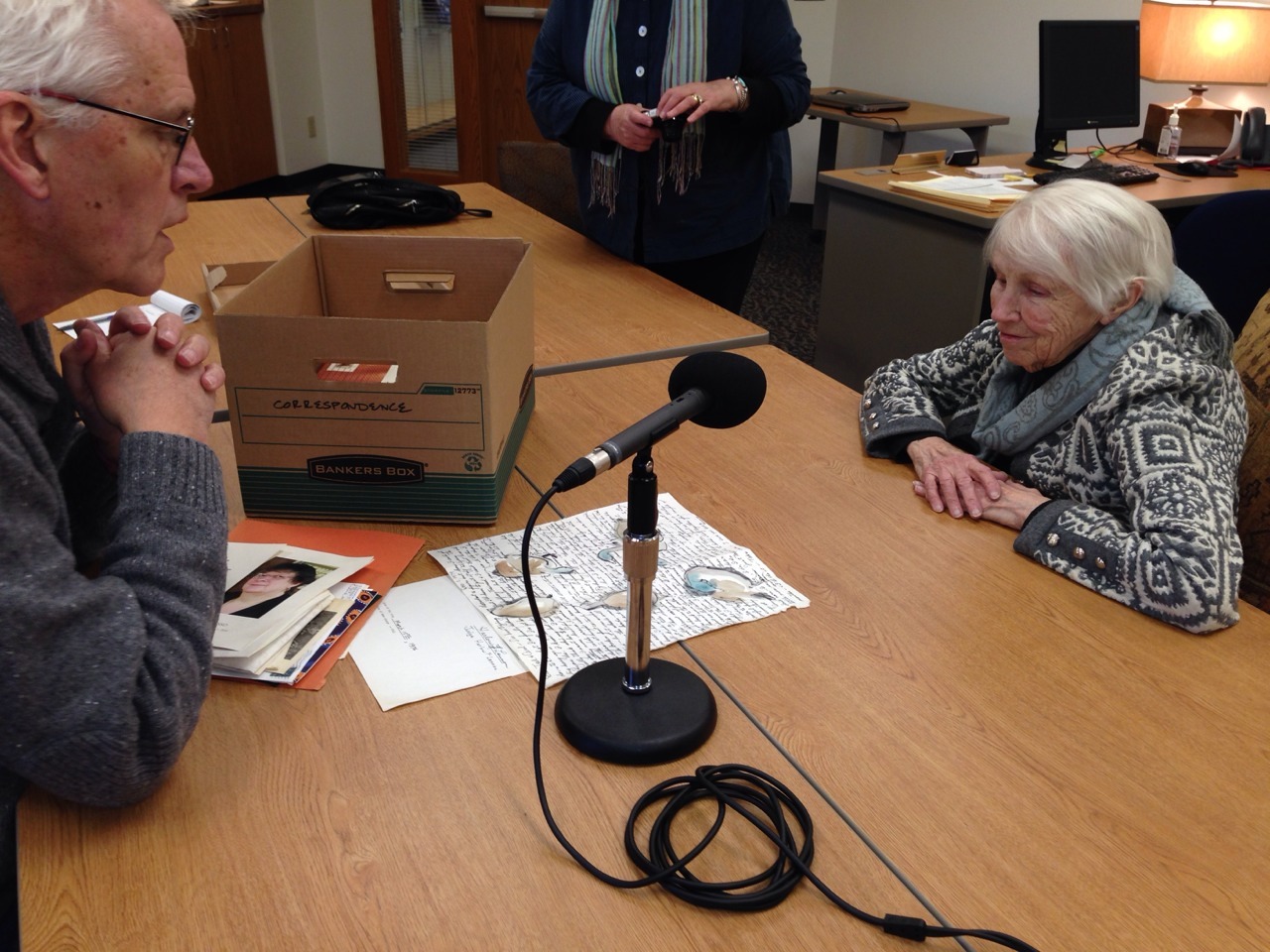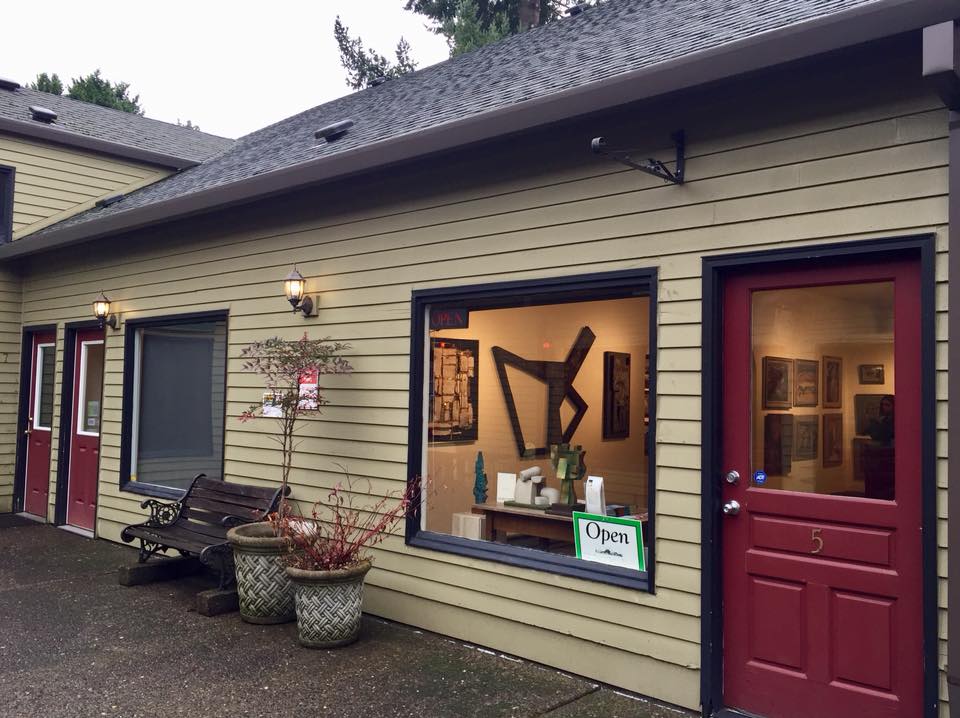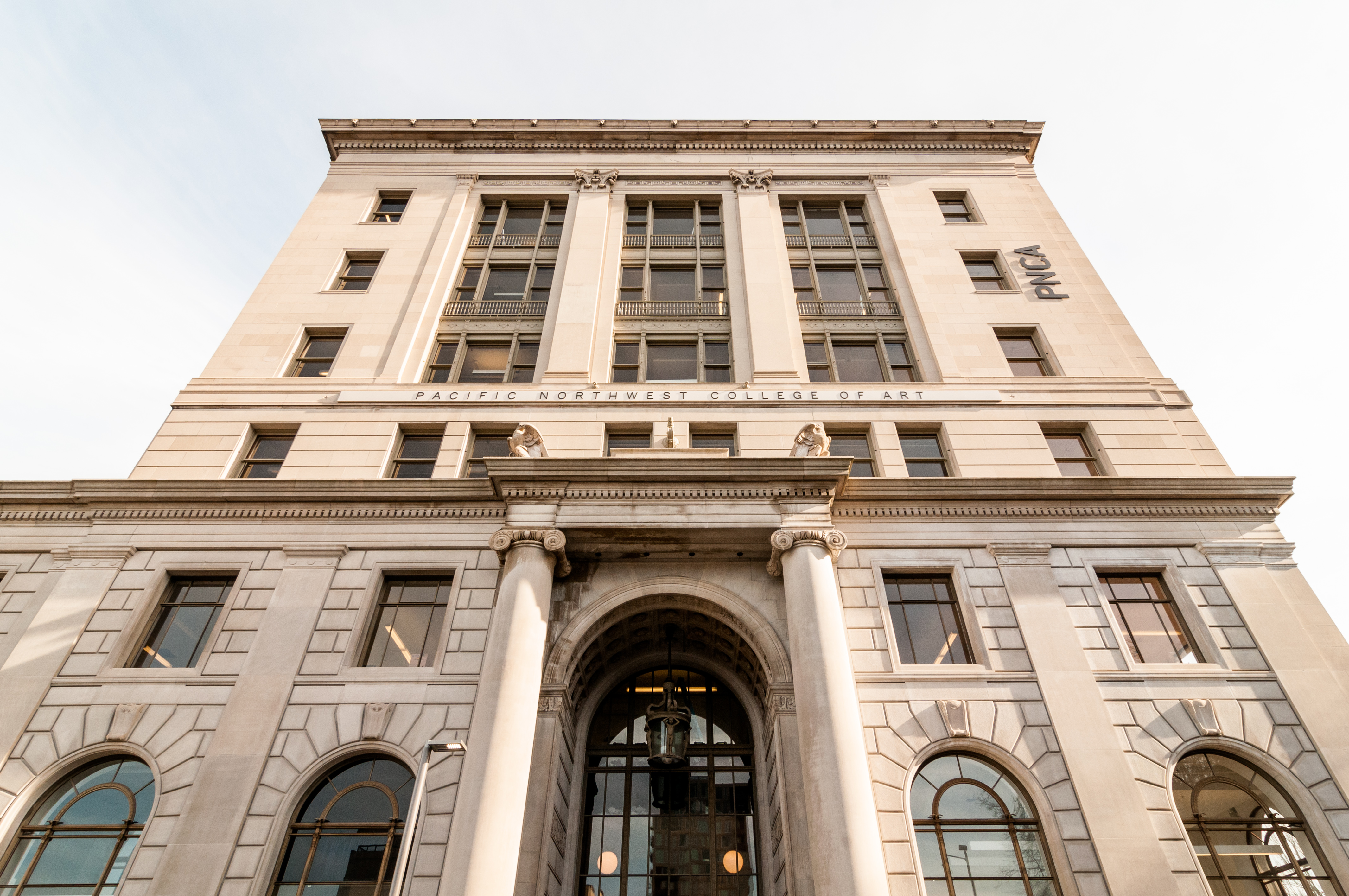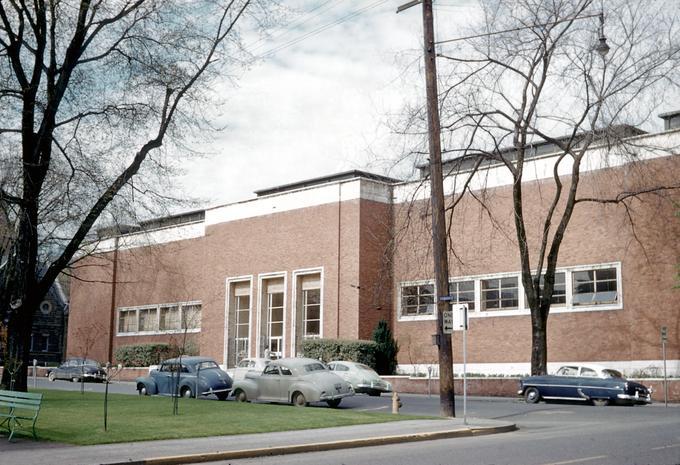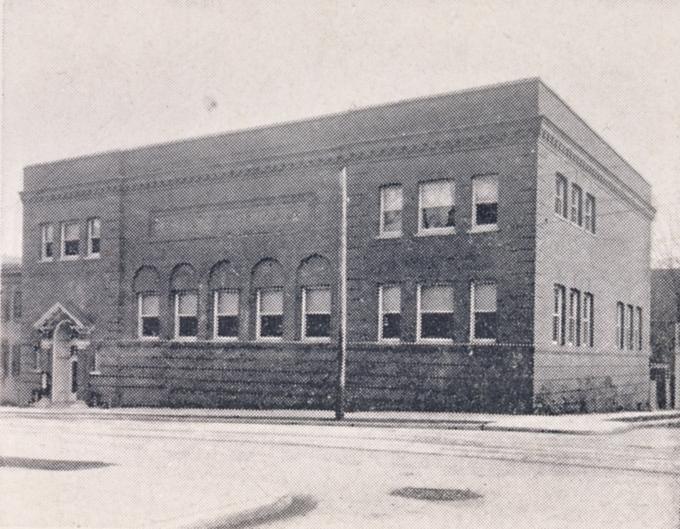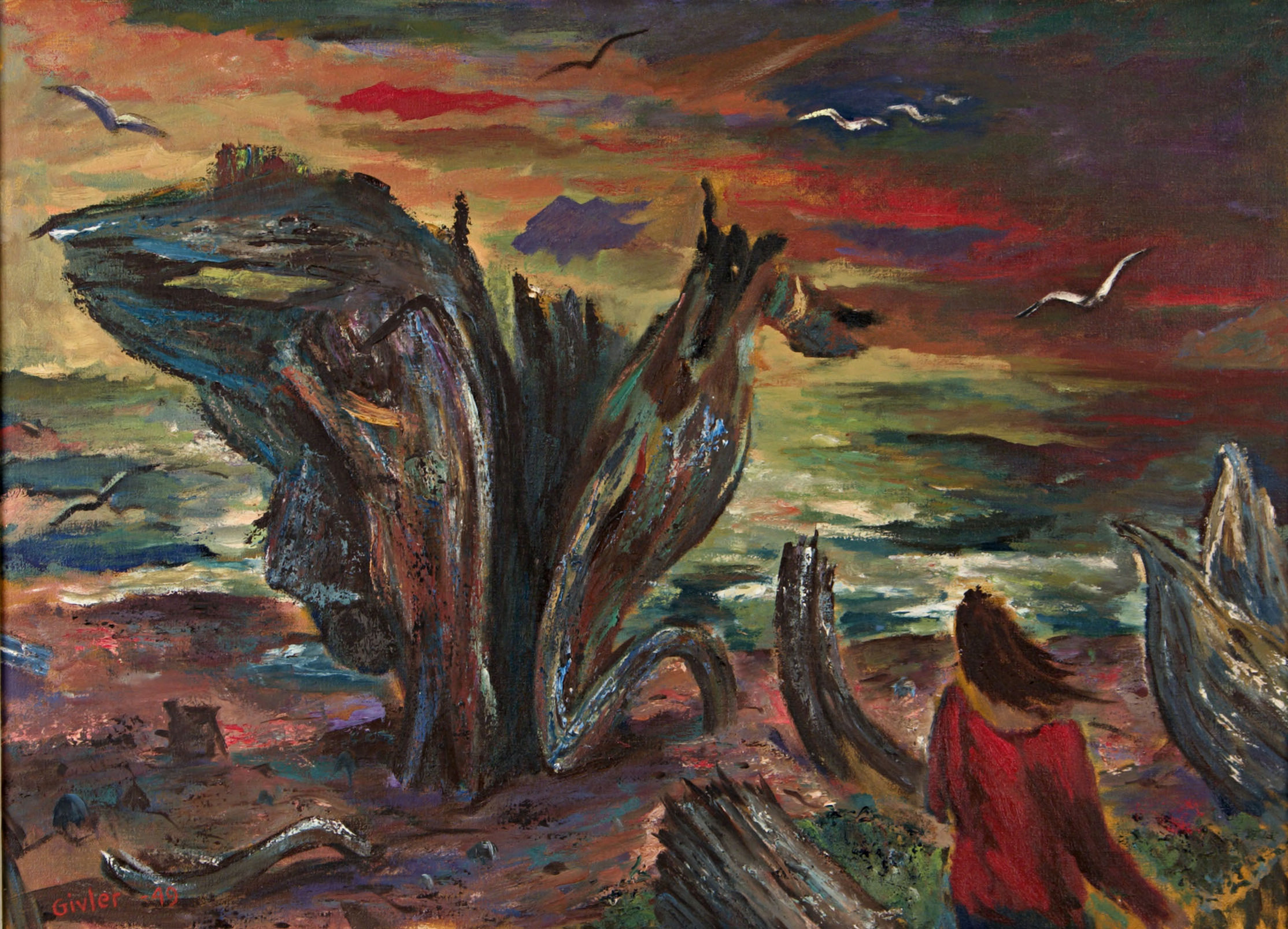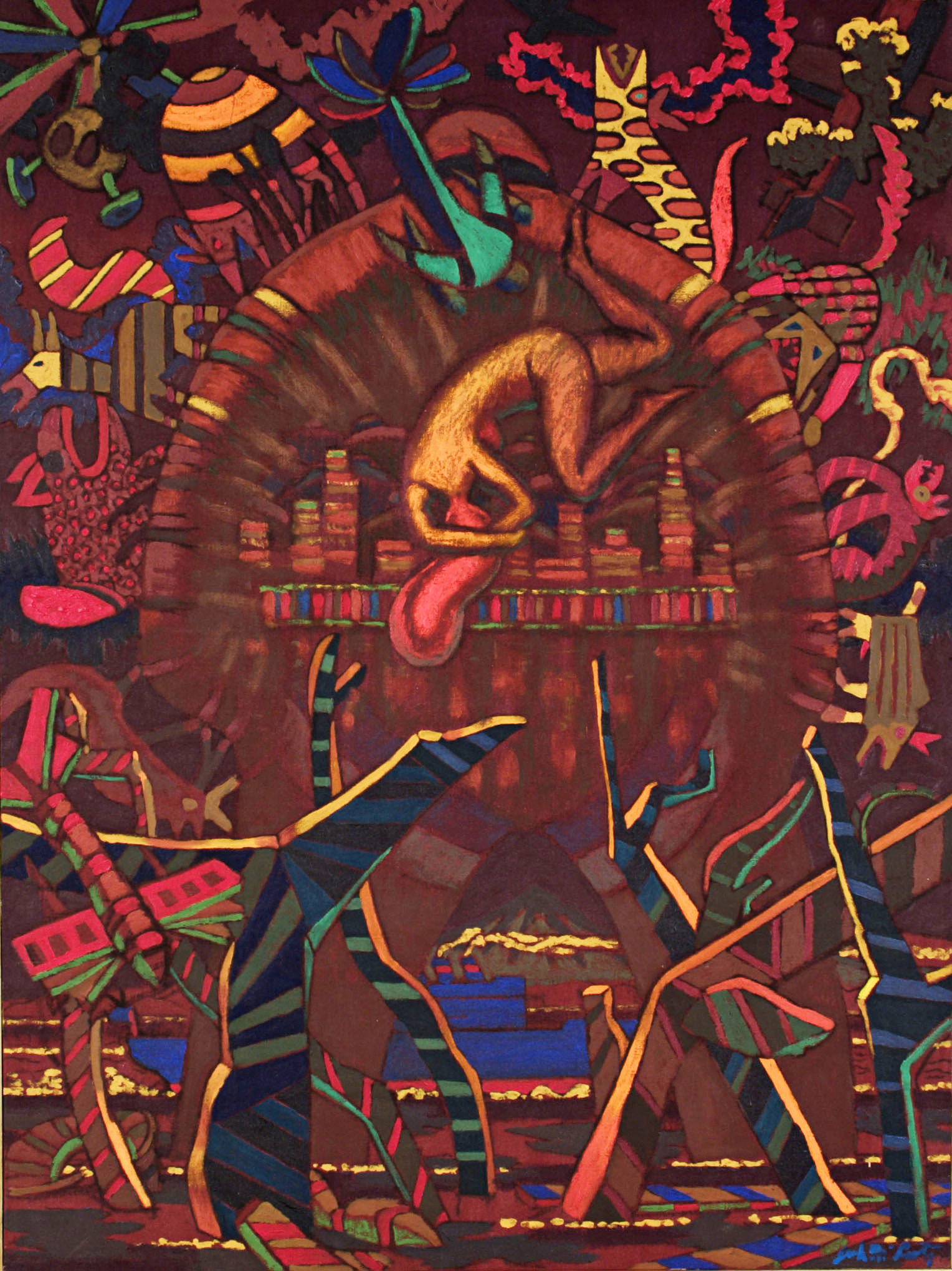“Edges are the story of my life,” artist Eunice Parsons told an interviewer. A painter, tilemaker, and printmaker, she is best known for collages, the art form “where we see edges and relationships” come together. Her artwork might include posters, silkscreens, ticket stubs, packaging materials, or old magazine covers that demonstrate the interplay of words and phrases. "Collage lets me use my love for words, concrete and abstract,” she said. “The detritus of our contemporary culture, posters picked up in my travels, are all grist for the mill.” During the 1960s and 1970s, Parsons was one of the few female instructors at the Portland Museum Art School, where her honest and direct style had a strong influence on her students.
Eunice Lulu Parsons was born in Loma, Colorado, on August 4, 1916, to parents Brainard Parsons, a draftsman, and Florence Alta Weed Parsons. In about 1920, the family moved to Chicago, where Eunice attended children’s art classes at the School of the Art Institute of Chicago. Her father died when she was twelve. Eunice enrolled in art classes at the University of Chicago in 1934 and 1935 before marrying Allen Herbert Jensen, a merchant seaman, in 1936. By 1940, the couple, their three children, and Parsons’ mother had moved to Portland. The Jensens divorced in 1960.
After her children were out of school, Parsons returned to studying art. From 1950 to 1954, she took classes at the Portland Museum Art School (now the Pacific Northwest College of Art), studying with artists such as Jack McLarty and William Givler, the longtime dean of the school. “When I was 18 years old I gave up on art,” she told an interviewer when she was in her nineties. “Life began again at the Museum Art School at age 34.”
In 1957, Parsons traveled by bus to the East Coast—including visits to New York City, Washington, D.C., and Philadelphia—to learn more about modern art, specifically abstract expressionism. Her sketchbooks from the trip depict portraits, city scenes, and landscapes with a focus on the elements of line, color, and shading. On her return to Portland, she took a position at the Portland Museum Art School, where she taught classes in composition and printmaking until 1979. She also led several trips to Europe for students at Portland State University.
It was in the late 1960s that Parsons began creating collages from torn pieces of her prints, attracted to the art form because of the spontaneity it required and the idea of using remnants. She remembered making collages as a young girl and was interested in working with “posters, silk screens, bus tickets, delivery packages, tearing and cutting paper.” She liked the random word play and juxtaposition of images that collage encouraged, and her work changed over the years to include artifacts such as photography, type, advertisements, and stamps.
Parsons received an honorary master of fine arts from the Pacific Northwest College of Arts in 2001. In 2004, she was the only remaining artist of a group exhibition at Marylhurst University called Northwest Matriarchs of Modernism, which featured the work of women artists in the Northwest from the 1930s through 1960s. Two years later, she cofounded the 12x16 Gallery in southeast Portland, creating a place where artists could promote each other’s work. The gallery had its final showing in 2017.
In 2016, at the Roll-Up Photo Studio Gallery in southeast Portland, Parsons celebrated her hundredth birthday with Eunice Parsons, La Centenaire, an exhibition of collage works created from 2006 to 2016. “Her vivid collages (made from a remarkable stash of materials that she kept in her attic studio) together with her vivacious personality,” art historian Roger Hull wrote, “made her a favorite in the art community until very late in life.”
Parsons’ artwork is in the permanent collections of the Hallie Ford Museum of Art at Willamette University, the Jordan Schnitzer Museum of Art at the University of Oregon, and the Portland Art Museum.
-
![]()
Self-portrait, Eunice Parsons, 2016.
Courtesy Eunice Parsons -
![]()
"Steel Bridge Redux," Eunice Parsons, 2009.
Courtesy Eunice Parsons -
![]()
Eunice Parsons and Roger Hull, Willamette University, 2011.
Courtesy Eunice Parsons "The art and life of Eunice Parsons" blog -
![]()
Untitled (History), by Eunice Parsons, 2005.
Courtesy Portland Community College -
![]()
Eunice Parsons with Roger Hull, Willamette University, 2014.
Courtesy Eunice Parsons -
![]()
12x16 Gallery, Portland, Oregon (now closed).
Courtesy 12x16 Gallery.
Related Entries
-
![Pacific Northwest College of Art]()
Pacific Northwest College of Art
Pacific Northwest College of Art (PNCA), founded in 1909 by the Portlan…
-
![Portland Art Museum]()
Portland Art Museum
The Portland Art Museum, which opened in 1895 in the city library with …
-
![Portland Art Museum School]()
Portland Art Museum School
In October 1909, the Portland Art Association (PAA) opened its school, …
-
![William Givler (1908-2000)]()
William Givler (1908-2000)
William Givler was an artist and educator who joined the faculty of the…
-
![William James (Jack) McLarty (1919-2011)]()
William James (Jack) McLarty (1919-2011)
William James “Jack” McLarty, one of Oregon’s veteran modern painters, …
Map This on the Oregon History WayFinder
The Oregon History Wayfinder is an interactive map that identifies significant places, people, and events in Oregon history.
Further Reading
"Eunice Parsons." WEDU Arts Plus, Oregon Public Broadcasting. Video.
"In the Studio: Eunice Parsons." Portland Community College. Video.
12x16 Gallery Records, 1997-2018. WUA092, Archives and Special Collections, Mark O. Hatfield Library, Willamette University, Salem, Oregon.
The Art of Eunice Parsons. Tumblr account.
“Eunice Parsons & Process.” Willamette University. Digital Exhibit.
“Eunice Parsons, La Centenaire.” Roll Up Photo Studio & Gallery, Portland, Oregon. Exhibition.
“Eunice Parsons.” Art Collection. Portland Community College.



